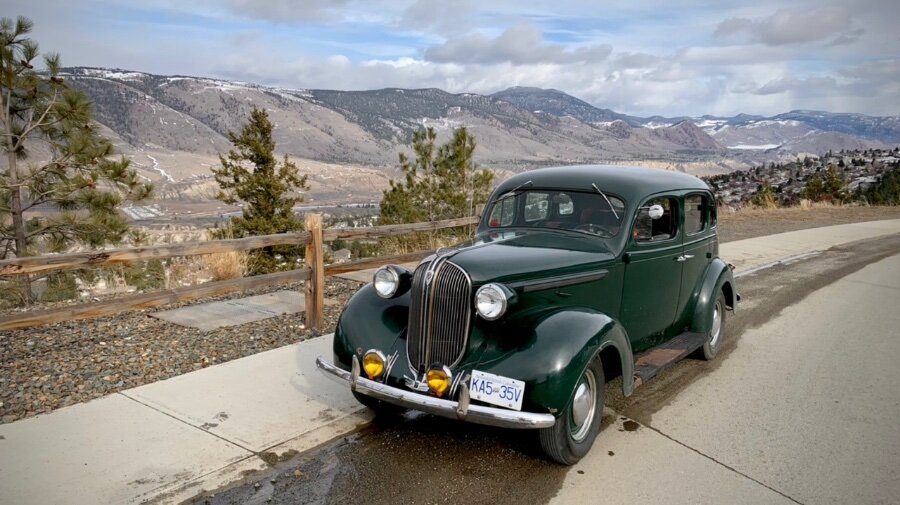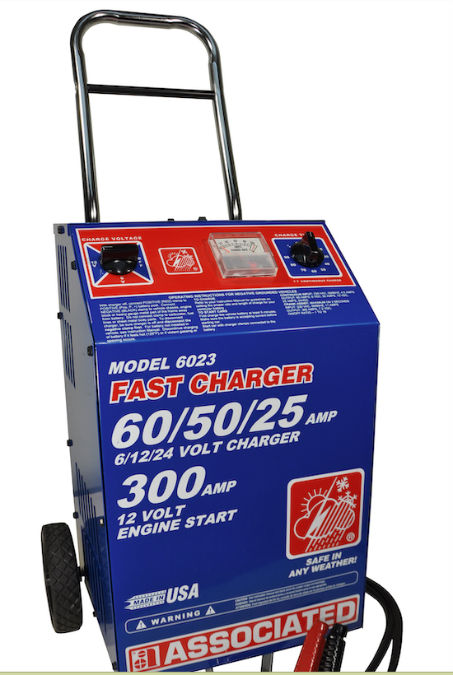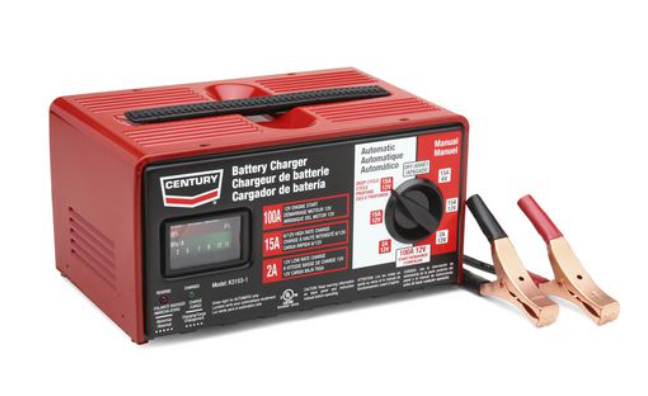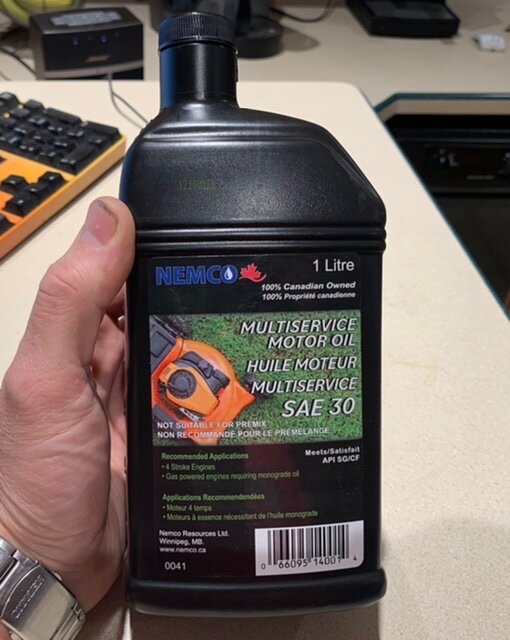-
Posts
3,467 -
Joined
-
Last visited
-
Days Won
193
Content Type
Links Directory
Profiles
Articles
Forums
Downloads
Store
Gallery
Blogs
Events
Everything posted by keithb7
-
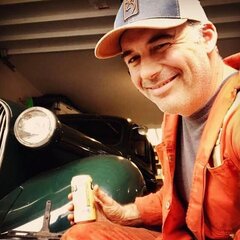
Can't get front brake shoes to go in so drum will fit on 48 DeSoto.
keithb7 replied to MarcDeSoto's topic in P15-D24 Forum
Lots of good info here: -

Can't get front brake shoes to go in so drum will fit on 48 DeSoto.
keithb7 replied to MarcDeSoto's topic in P15-D24 Forum
Half way up the shoe, is the toe adjuster cam. Used for the "minor adjustment". Adjusting it moves the upper half of the shoes in our out. With the shoes and return springs properly installed go to the rear of the backing plate. Get a wrench and turn the quite large bolt head (1 1/16" wrench) towards the center of the spindle. This will turn the cam inward, allowing the shoes to retract in, toward the brake cylinders. Turning it out forces the shoes out toward the drum. Both the shoes have their own minor cam adjustment. Each one turning the bolt head in opposite directions for adjustment. Start there at the minor adjustment. Then head down to the two eccentric shoulder bolts at the bottom on the shoes. Turn the arrows pointed toward the cylinder as mentioned. With the shoes on, try twisting these lower bolts, and observe shoe movement. This is the heel of the shoe. Move the bolts so the shoes are in as close as possible to the spindle centre. Now with the major and minor cams all the way in, the shoes and springs in place, try sliding your drums on. You aren't done yet, but the drum should at least side over the shoes. Next you proceed to set up the shoes concentric. This is where the fancy tool comes in to use. You can see a quick minor adjustment here: -
I am no engineer, but I'll guess at a few points. The intake guides, the cylinder vacuum pulls air across them in 1 direction only. From the carb, and down into the cylinder. The exhaust guides have exiting gasses from the cylinder cross over them in the exact opposite direction as the intakes. I might guess the guides are installed in opposite direction due to air flow. Intake in, exhaust out. Perhaps someone smarter than me can tell us what the tapered end of the guide is designed to do. Does the taper help negate a vacuum or venturi effect on the inside of the guide to maybe prevent crank case vapours from entering the cylinder?
-

Increasingly Difficult To Find Manual 6V Battery Chargers
keithb7 replied to keithb7's topic in P15-D24 Forum
I agree with all the posts to look for a used 6V charger on Facebook, Craigslist, swap meets, garages sales etc. I have been watching all of those places for the past year or so. I've had no luck finding what I want. For me, it must have a manual charge option. Must not be digital type. Must be bench top model. Over a year later, I gave up the search and ordered the new one. -

Increasingly Difficult To Find Manual 6V Battery Chargers
keithb7 replied to keithb7's topic in P15-D24 Forum
The car's 6V generator may put out a max of 30A. However the regulator cuts down the amp flow as the voltage comes up. Preventing an over-charge, or boiling the battery. The 6V 15A charger I bought, set to manual mode I suspect will keep pouring amps into the battery as long as it is on. I won't be leaving it on long term. Its easy enough to plug it in to a timer often used with block heaters. The 15A charger I bought will supplement my .75A trickle charger. As needed, either option will be used. I think of it like having the right tool for the job. Safety wise, I will be unplugging the 15A charger before disconnecting it from a battery. I'll also use it in a well ventilated area. -
Today was my first pleasure cruise of 2022. My 1938 Plymouth is back up with her newly rebuilt 237 ci 25” long engine. “How’s it drive with the new bigger engine?” you might ask. Fantastic! The is the best performing flathead powered car I’ve driven. The improved power to weight ratio seems quite good. There’s noticeably more torque. I rarely need to use 1st gear any more. I’m working her a little harder on the local hills today. Where others passed me before, i can easily overcome them if I want to. Without down shifting, up hill, in several examples. 3rd gear at 1:1 with a 4.11 rear end and a 237 engine is a sweet little package. I reset the valves this morning. I dialled in the timing and dwell. She’s smooth! Holy man, she starts right up very quickly. Smooth running, clean, no smoke. Very good power and performance. Cool running temps. Great 6V generator and throttle performance. I rebuilt the steering gear box while I was waiting for the machine shop. It steers good, better response. Hard to find much to complain about. I do confess, it appears I may have forgotten to put thread sealant on the rear main oil galley plug. I have an oil leak below this area. It’s in there pretty deep! Tranny would have to come out. Clutch off. Flywheel off. Support rear of block. Remove bell housing. Then remove the galley plug. Apply thread sealer and reassemble all. Phew! Maybe next winter. Maybe in a month. We’ll see. The odometer is just about to roll over 100,000 miles. Good timing. Long may you run….
- 7 replies
-
- 12
-

-

Increasingly Difficult To Find Manual 6V Battery Chargers
keithb7 replied to keithb7's topic in P15-D24 Forum
I have been looking for some time. Swap meets dried up for the last 2 years due to covid. I hummed and hawed. Placed the order this morning. I found one of these or sale locally. Made in USA. Way overkill I figured. And the foot print? I chose to move on from it. Looks like a quality charger tho. -

Increasingly Difficult To Find Manual 6V Battery Chargers
keithb7 replied to keithb7's topic in P15-D24 Forum
I have replaced plenty of transformers in vintage guitar tube amplifiers. I took it apart,. looked at this 1 amp 6V charger, thought about the service life I got since '97. I tossed it. @Los_Control The car's generator puts out more amps than this 15A charger I ordered. I won't be boiling any acid. A flooded acid battery benefits from a good hit of reasonably higher amps once in a while. Not long term, or overnight. After it's been sitting for a while, 15A will do what a 2A or a digital charger cannot do. @Bryanthat Westward is along the lines of the one I bought. Yet the Westward is no longer available to order. The others are floor models, I preferred not to opt for those types. -
Digital battery charges, you have no control. I had a manual 6V 1 amp charger that I bought new in 1997. I literally punched the date on it when I bought it. It just died. I threw it out. I have a few digital 0.75 amp digital chargers. When batteries start to degrade a bit, it seems these digital chargers come up with many reasons why they won't charge. I want a manual charger that I control. I have been seeking out a new one. I don't have a lot of floor space. I like the idea of the industrial grade charges. Made in the USA, on wheels, but they take up valuable floor space. They are generally overkill too, at 40A or so. Too big. Sure they will likely outlast me though. It's not super easy to find a bench top, 6V manual charger it seems. I did find this one here. It's on the Canada Walmart site, yet absent from the USA site. Made in China (not ideal but will do). Pretty sure the 100A start option will only work on 12V. This one delivers 15A at 6V. That ought to give a seasonal 6V battery a pretty good shake. Most battery threads turn into talk about Optima batteries. I'm not interested. I'm 5 years into a flooded wet cell conventional. No issues yet, just the digital chargers. I saw some Optima batteries at the auto parts store locally last week. $400 range plus taxes & enviro levy. I'm staying more toward the old fashioned conventional route. I'm stubborn.
-
I am seeing that here too. Pretty hard to stop any oil drips it seems!
-
I used permatex pipe thread sealer. Maybe I missed this one at the rear? Distracted maybe? It happens. Unsure. I gotta way deep now to address it! I found the yellow tape, usually used for natural gas lines, a little too thick.
-

Why were the rear brake shoe linings shorter on Lockheed brakes?
keithb7 replied to MarcDeSoto's topic in P15-D24 Forum
As a general rule, much more braking force is performed by the leading brake shoe, compared to the tailing brake shoe. Larger brake surface area on the front, means better braking performance. More friction area. Front brakes seemed to always get the R&D money. Even today there are still new vehicles made with front disc brakes, and rear drum brakes. The front does all the work! Except when backing up. Yet how often and how fast are we going in reverse compared to forward? -
You just ruined my day! Lol. I have noticed a small oil leak at the engine rear. Hadn't figured out where it was coming from yet. Your comment just rang my bell. The rear oil galley plug. Darn it. I bet that's it. It's coming from LH area of bell housing. Engine probably has to come back out. Perhaps I'll pull the tranny and flywheel. Perhaps I could access it then. Hmm. Next winter's project? ?
-
Yes I have had a similar experience when rebuilding my drive shaft. I ended up re-using a few of my original parts that looked good. I installed all new needle bearings and grease. The new button caps were useless to me. My main objective was to add the missing large centre spring. I replaced what I could use from the new parts kit. I installed the missing spring and she's been problem free ever since. I have come to accept that reproduction parts are more often than not, crappy replacements of the OEM parts. I salvage what I can from OEM parts. I add bits and pieces from the offshore new parts and create something usable. Not ideal no. My '38 is 81 years old. I tend to forgive and move on to an altered plan or alternative supplier. It can be a bit of a money waste at times, but it's a hobby. I don't allow myself to get too wound up. I am grateful in some ways to have a specialized supplier like AB. Other times I curse AB and the person I am dealing with there.
-

Little late for this Valentine's day, maybe next year...
keithb7 replied to Plymouthy Adams's topic in Off Topic (OT)
Lol. Be sure to leave the cell phone on the kitchen counter, on your way out. Come home Monday and advise all charges were dropped. A misunderstanding based on an off colour social media post you made. -
You’re going to learn a ton rebuilding that engine. The experience you’ll gain, priceless. I recommend you try and do as much as you can yourself. For me the measuring and blueprinting that I did, was a big part of the process. Good luck.
-
Still fighting you hey? She won’t give up. My guides came out pretty easy with the air hammer and punch tool. Your engine must have a lot more corrosion than I had. I read somewhere on line where a person got a couple pieces of steel plate, some high quality threaded rod, nuts, washers. He made a cheap threaded puller and got them out.
-
What size engine is the ‘58 Dodge truck? 23” long 230?
-
I'll join the fight. 10W30. I might go xxW40 when it 90+ around here in July and Aug. Just this week in my fresh 237 rebuild I saw 43 ish psi at idle with 10W30. I dumped it and installed SAE30. Idle psi was up to 50-ish.
-
These long stroke engines were originally designed for torque with minimal transmission shifting. My understanding is back in the day it was considered luxury quality to be able to drive around in only 1 or 2 gears. The less shifting the better the car. So torque was king. Not necessarily top end speed for the average car owner. The old square cars plowed through wind resistance best they could. Air flow design had not been considered until the early 30's. Soon after the Chrysler Airflow was released. The flat head six in mass production by the early 1930's, there became less demand for the 4 cylinders engines. Henry Ford even had to relent eventually. The Mopar flathead 6 saw little change until it was replaced by the V8 in about 1954. Compression numbers rose over the decades, stroke changed and grew bit. The basic foundations of the engine design, still the same since the 19-teens. High revving, was not part of the design for these mass produced people movers.
-
Just a note: with SAE30 oil in there now, I am seeing about 53 psi at warm idle, 58 -ish I'd say at higher RPM. A little more psi than with the 10W30.
-
Tonight I took it beyond my driveway for the first road drive. I stuck around the neighbourhood. Hilly up and down terrain. Baby-ing the motor. I pulled a few short hills. Through all the gears. No lugging and no high revs. First impressions: Torque! More torque. I can feel it right off idle its right there. Also pulling turns and on the hills too. In 2nd and 3rd, I feel quite bit more torque. It's quite pleasant. And smooth! Oh boy is it ever a smooth running engine. Like creamy butter is applied when the toque comes on, up the hill. Early indications are this 237 in a P6 is going to be quite a nice little package for me. I look forward to completing the full break-in period so I can work it hard up the big hill home. My testing ground. I topped up the master cylinder and the brakes are back.
-
Thanks for the kind words folks. I am 99% sure I know what’s wrong with my brakes. They have been sitting with no residual pressure at the wheel cylinders, for the past 15 months. They have been dripping down. Not uncommon for old cylinders that the owner hones, scrubs with scotch brite and re-uses. They’ll seal up and stay dry when used. Park it for a few months, then they start self bleeding. Despite my reluctance, I am going to install SAE30 oil tonight. Initially I put in 10W30 for first start-up. I’ve flushed it through the engine for probably 30 minutes by now. I’ll dump it now. Then proceed to break-in the rings with SAE30. 100 miles or so later I’ll dump the SAE30 and go back to 10W30. Someone has convinced me the SAE30 is the right oil to break-in the engine. I am skeptical but what the heck. I’ll do it. Won’t hurt anything. For my fellow Canadians, Princess auto stocks it. Easy to get.
-
Tonight there was a small old 1938 Sedan in Canada that once again, propelled itself. I am tickled to share this brief clip tonight. One more has been checked off my bucket list. Many of ya’ll have experienced this. It sure feels good. A fresh new 237 engine. Now I just need to go find where I put the brakes. I seem to have forgotten to install them. No workee! ?
-
Fortunately I have both. Great high speed data at home and reliable celluLar data at work. Still waiting for the bears to show up at the garbage cans. Too early yet. Still hibernating. I should have some good bruin photos in June. Thieves may not want to wear coveralls with reflective stripes. Lol.


